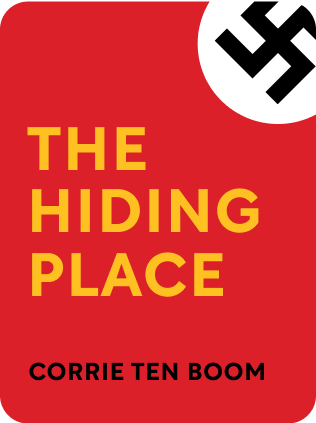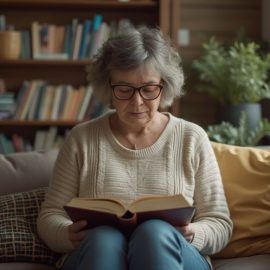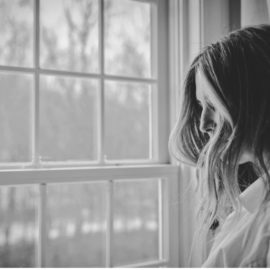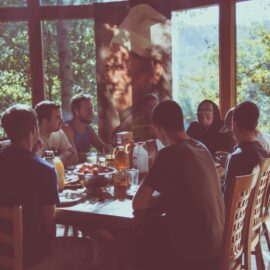

This article is an excerpt from the Shortform summary of "The Hiding Place" by Corrie ten Boom. Shortform has the world's best summaries of books you should be reading.
Like this article? Sign up for a free trial here .
What is The Hiding Place book about? Is it a true story?
The Hiding Place book is about Corrie ten Boom and how she came to rescue Jews by hiding them in her home. Corrie and her family risked their lives to protect others because of their unshakable faith.
Read more about the incredible true story from The Hiding Place book.
What Is The Hiding Place Book About?
The Hiding Place book is an autobiographical memoir by Corrie ten Boom, a devoutly religious woman who lived in the Holland city of Haarlem during the Nazi occupation. Compelled by her unshakable Christian morality, she defied tyranny to rescue her Jewish neighbors who faced annihilation during the Holocaust. She was ultimately caught and sent to the notorious Ravensbruck death camp, where she witnessed scenes of unimaginable cruelty. In the camp, it was Corrie’s bedrock faith in the glory of God that sustained her. She discovered that love was a far more powerful force than hate—for God’s love was truly unconquerable.
In The Hiding Place book, the ten Boom family, living in the Dutch city of Haarlem, consisted of father Casper, son Willem, and daughters Betsie, Nollie, and Corrie. They were pillars of their community, widely respected and admired by their neighbors and friends. Their Christian faith sustained Corrie ten Boom and her family through the horror of the Nazi occupation from 1940-1945. This faith would be her salvation—as well as the salvation of all those whom she rescued from persecution and almost certain death, as their home would become both a spiritual and a literal hiding place.
One night after the curfew, Kik introduced Corrie to the local leaders of the Resistance. They were instantly sympathetic with Corrie’s effort to rescue Jews and offered her their resources, knowledge, and contacts to help her expand and solidify her operation. The organization impressed upon Corrie the need to make sure that her safehouse was truly safe. The place in her home where Jews were hiding needed to be totally undetectable, with everyone at the Beje knowing exactly what to do in the event of a sudden raid by the Gestapo. Crucially, the Beje lacked a secret room—something that needed to be addressed immediately.
Improving the Hiding Place
The Resistance sent an operative to help Corrie build a permanent hiding place at the Beje in The Hiding Place book. He installed a false brick wall in Corrie’s room, behind which was to be the secret room where Jews would be able to hide. Corrie was astonished by the thoroughness and quality of the work. It was perfect, totally undetectable from the outside. There was enough room to stand and walk around in the hiding place, as well as a well-hidden vent that would let air in from the outside. The hiding place was only accessible through a small sliding panel, which was hidden behind bookshelves in front of the false wall. The Beje was now ready to function as a permanent hiding place.
The danger Corrie faced was immense. If caught, she and her whole family risked being thrown into a concentration camp or even being summarily executed by the Nazis. Corrie came to believe that self-sacrifice in the service of rescuing others was the deepest expression of love. And she was prepared to face death in order to show that love, just as Christ had on the cross.
Corrie’s rescue and hiding operation was growing rapidly by spring 1943. What started out as a small network of friends and family now included 80 co-conspirators. Many of these contacts were people in positions of authority in Haarlem, including a Haarlem police officer. Corrie began to worry that the circle was growing too large and unwieldy.
Getting Arrested
In The Hiding Place book, on the morning of February 28, 1944, the Beje was raided by the authorities after one of Corrie’s operatives was caught by the Gestapo. Both Corrie and Betsie were savagely beaten during the home interrogation, as the Gestapo attempted to force a confession.
Although Corrie gave no information and the officers failed to find the Jewish fugitives in the hiding place, the ten Boom family—Corrie, Betsie, and Casper, in addition to Willem, Nollie, and Peter (Corrie’s nephew), all of whom were present at the Beje that morning for a meeting of their prayer group—was loaded into a van and taken to the federal prison at Scheveningen.

———End of Preview———
Like what you just read? Read the rest of the world's best summary of Corrie ten Boom's "The Hiding Place" at Shortform .
Here's what you'll find in our full The Hiding Place summary :
- Why devout Christian Corrie ten Boom decided to stand up to the Nazi occupation
- How ten Boom and the Jewish neighbors she was hiding were caught
- How ten Boom survived the concentration camp and left with even stronger faith






